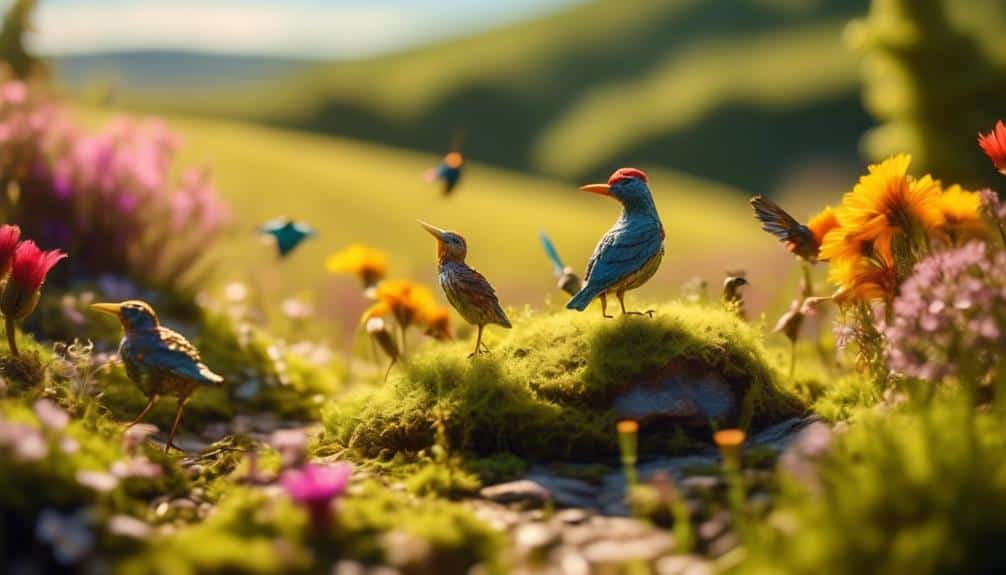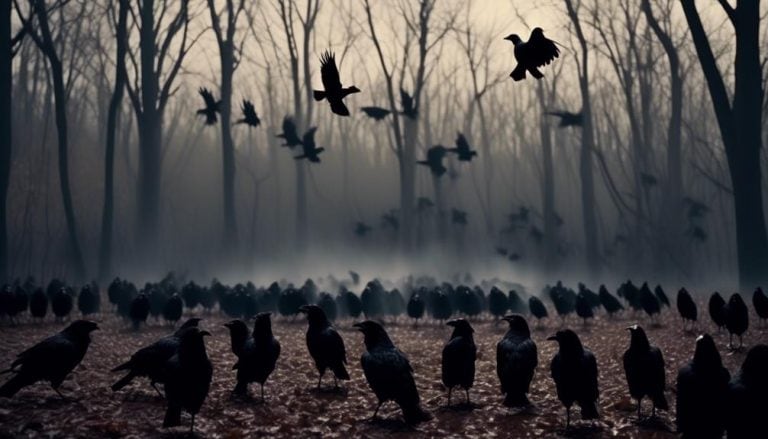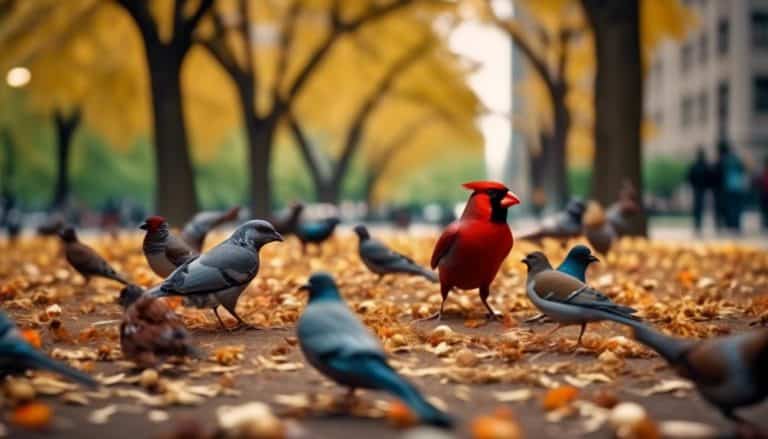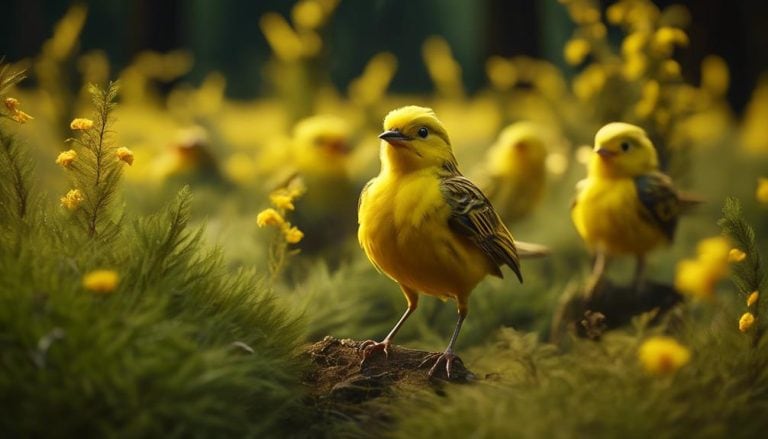As I embarked on my birding journey, I realized that capturing the essence of these winged creatures was more than just a mere hobby; it was a way of immersing myself in the wonders of nature.
That's when I discovered the power of a birding journal. With its pages waiting to be filled, it provides a unique sanctuary for me to document my encounters, observations, and reflections.
But what makes a birding journal truly invaluable? And how can it enhance my birding experience? Join me as we uncover the secrets and benefits of this captivating tool, and perhaps, you'll be inspired to embark on your own avian adventures.
Benefits of Using a Birding Journal

Using a birding journal provides invaluable insights into the world of avian observation, allowing me to document my encounters, track patterns, and deepen my understanding of bird behavior.
One of the key benefits of maintaining a birding journal is the opportunity for reflective practice. By documenting my observations, I'm able to review and analyze them, identifying trends and patterns that may have otherwise gone unnoticed. This reflective practice enables me to refine my skills as a birdwatcher and enhance my overall birding experience.
Documenting my observations in a birding journal also serves as a valuable reference tool. Whenever I come across a new species or witness interesting behaviors, I can refer back to my journal and compare notes. This helps me to make connections between different sightings, allowing me to develop a more comprehensive understanding of bird behavior and ecology.
Furthermore, a birding journal enables me to track the seasonal variations in bird populations and movements. By recording the dates and locations of my sightings, I can identify patterns and trends in bird migration, breeding, and feeding habits. This information not only contributes to my personal knowledge but can also be shared with other birders and researchers to contribute to our collective understanding of avian ecology.
Choosing the Right Birding Journal

When selecting a birding journal, it is essential to consider its durability, size, and layout to ensure it meets the requirements of a thorough and organized record-keeping tool. A birding journal serves as a repository for all the valuable information and observations made during birding trips. It helps in documenting the species encountered, their behavior, and other important details. To assist birders in making an informed decision, I have compiled a table below comparing some popular birding journals based on their features:
| Journal Name | Durability | Size | Layout | Customizing Pages | Digital Options |
|---|---|---|---|---|---|
| Field Notes | Durable cover | Pocket-sized | Ruled | Not customizable | None |
| Moleskine | Sturdy binding | Medium-sized | Dotted | Partially | None |
| Leuchtturm1917 | Hardcover | Large-sized | Grid | Fully | None |
Customizing pages allows birders to add additional sections for notes, sketches, or checklists, enhancing the organization and personalization of their birding journal. While digital options are becoming more popular, many birders still prefer the traditional pen-and-paper method for its simplicity and tactile experience. However, some birding apps and software offer digital journaling capabilities, providing convenience and the ability to easily search and access past observations. Ultimately, the choice between a physical or digital birding journal depends on individual preferences and needs.
Tips for Effective Journaling

To maximize the effectiveness of your birding journal, employ strategies that promote thoroughness and precision in recording your observations. Reflecting on experiences and increasing mindfulness are essential elements of effective journaling.
When writing in your journal, take the time to reflect on your birding experiences. Think about the sights, sounds, and emotions you experienced during your outings. Reflecting on these experiences won't only enhance your enjoyment of birding, but it will also deepen your understanding and appreciation of the natural world.
Increasing mindfulness is another important aspect of effective journaling. Mindfulness involves being fully present in the moment and paying attention to the details of your surroundings. When you're out birding, try to be fully engaged in the experience. Notice the colors and patterns of the birds, listen for their calls, and observe their behaviors. By being mindful, you'll be able to capture more accurate and detailed observations in your journal.
In addition to reflecting on experiences and increasing mindfulness, it's important to be precise and detailed in your journal entries. Take the time to accurately record the species, location, and date of each observation. Include details about the bird's behavior, habitat, and any notable characteristics. The more precise and detailed your entries, the more valuable your journal will become as a reference and a record of your birding adventures.
Organizing Your Birding Journal
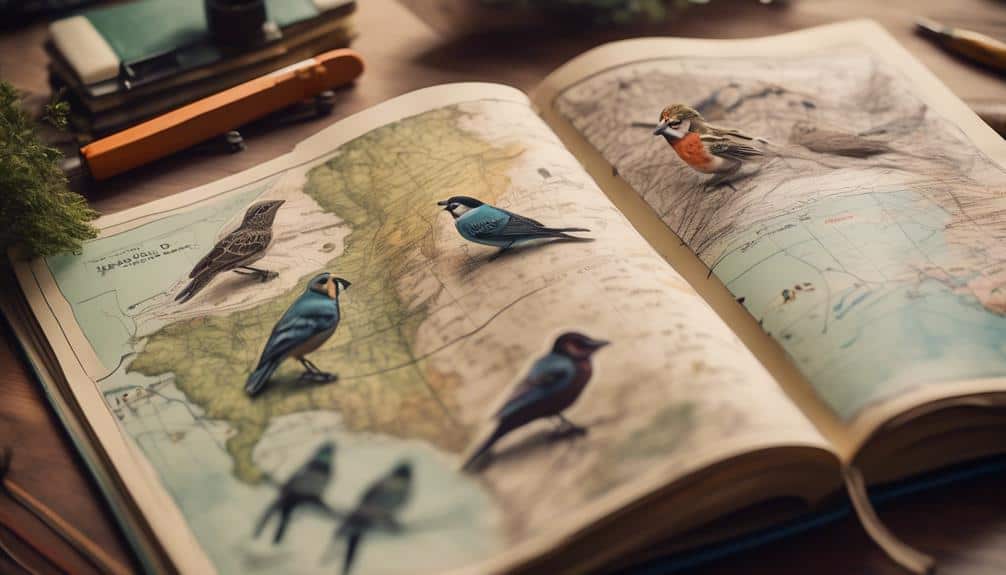
As I organize my birding journal, I meticulously categorize each entry to ensure easy access to specific observations and information. Keeping a digital journal allows me to efficiently track sightings and maintain a detailed record of my birding experiences. Here are three key strategies I employ to effectively organize my journal:
- Date and Location: I always begin each entry with the date and location of my birding excursion. This helps me easily retrieve information about specific outings and compare sightings across different areas.
- Species Identification: I carefully record the names of the bird species I encounter, using both common and scientific names. Including detailed descriptions and photographs further aids in accurate identification and future reference.
- Detailed Notes: I make sure to jot down important details about each sighting, such as behavior, habitat, and any unique characteristics observed. This information not only enhances my own understanding but also contributes to scientific knowledge and conservation efforts.
Enhancing Your Birding Experience With Journaling

By journaling my birding experiences, I have found that I am able to enhance my understanding and appreciation of the avian world. Keeping a birding journal allows me to document my nature observations and reflect on the intricate details of each encounter. Additionally, it serves as a valuable tool for improving my birding photography skills.
| Nature Observations | Birding Photography |
|---|---|
| 1. Species identification | 1. Capturing unique poses |
| 2. Behavior patterns | 2. Mastering composition |
| 3. Habitat preferences | 3. Utilizing natural light |
My birding journal is filled with detailed records of the birds I have encountered in the field. I note down the species, the date and time of the sighting, and any notable behaviors observed. This meticulous documentation helps me track patterns and trends over time, allowing me to deepen my knowledge of different bird species and their habitats.
In addition to recording observations, I also use my journal to improve my birding photography skills. I make note of successful techniques for capturing unique poses and mastering composition. I experiment with different angles and lighting conditions, noting the results and learning from each experience.
Frequently Asked Questions
How Can I Use My Birding Journal to Contribute to Conservation Efforts?
I can use my birding journal to contribute to conservation efforts by using it for scientific research and connecting with other birders. It allows me to document important observations and share valuable data with researchers and conservation organizations.
What Are Some Creative Ways to Personalize and Decorate My Birding Journal?
Crafting a captivating and customized birding journal can be a delightful endeavor. From incorporating vibrant watercolors to adorning with pressed flowers, the possibilities are endless. Personalizing your journal adds a touch of individuality to your birding adventures.
Can I Use My Birding Journal to Track Other Wildlife Species Besides Birds?
Yes, my birding journal can be used to track mammals and reptiles. I can also monitor insect populations by documenting their presence and behavior. It allows me to gather detailed, scientific observations of various wildlife species.
Are There Any Digital Options Available for Birding Journaling?
Yes, there are digital options available for birding journaling. Using a digital birding journal offers several benefits such as easy organization, instant access to information, and the ability to include photos and recordings for a more immersive experience.
Can I Use My Birding Journal to Keep Track of My Birding Trips and Locations Visited?
Yes, I can definitely use my birding journal to keep track of my birding trips and the locations I've visited. Using a birding journal for scientific research is crucial, as detailed notes are important for accurate observations.
Conclusion
After carefully observing and documenting my birding experiences in my journal, I've come to appreciate the immense benefits it brings.
Not only does it enhance my birding experience by allowing me to reflect on each sighting, but it also helps me organize my thoughts and observations in a detailed and scientific manner.
With my trusty journal in hand, I feel like a dedicated scientist, uncovering the mysteries of the avian world one feathered creature at a time.

